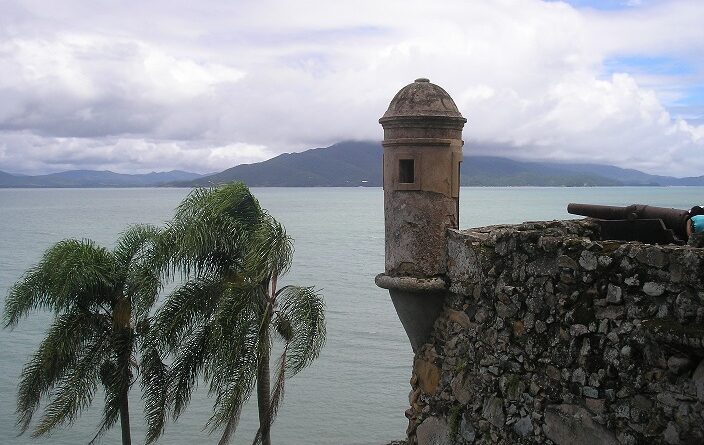Santa Catarina Island Fortresses
Designed by Brigadier José da Silva Paes, a Portuguese military engineer and the first governor of the Captaincy of Santa Catarina, the Defensive System of the Island, which included forts, was begun in 1739 and took about ten years to be complete.
Portugal sent Silva Paes as governor to protect the region from Spanish invasion, however, when he arrived here he identified the need to build forts.
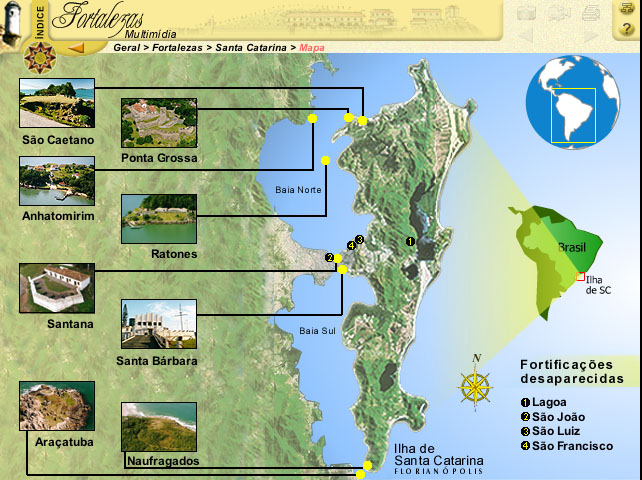
Today, the complex is part of a select list submitted to Unesco to become a World Heritage Site.
The structure built by the Portuguese to protect the beauties of the island of Santa Catarina has had dozens of fortifications.
The most significant are the forts of Anhatomirim, Ponta Grossa and Ratones, in the North Bay, and the Fortress of Araçatuba, in Barra Sul.
Set of Fortresses
The first to be built was the Fortaleza de Santa Cruz, on the Ilha de Anhatomirim, followed by the Fortaleza de São José da Ponta Grossa, next to Jurerê.
Next was Santo Antônio, on the island of Ratones Grande, in the North Bay.
At the southern tip of the island of Santa Catarina is the Fortress of Nossa Senhora da Conceição, on the island of Araçatuba.
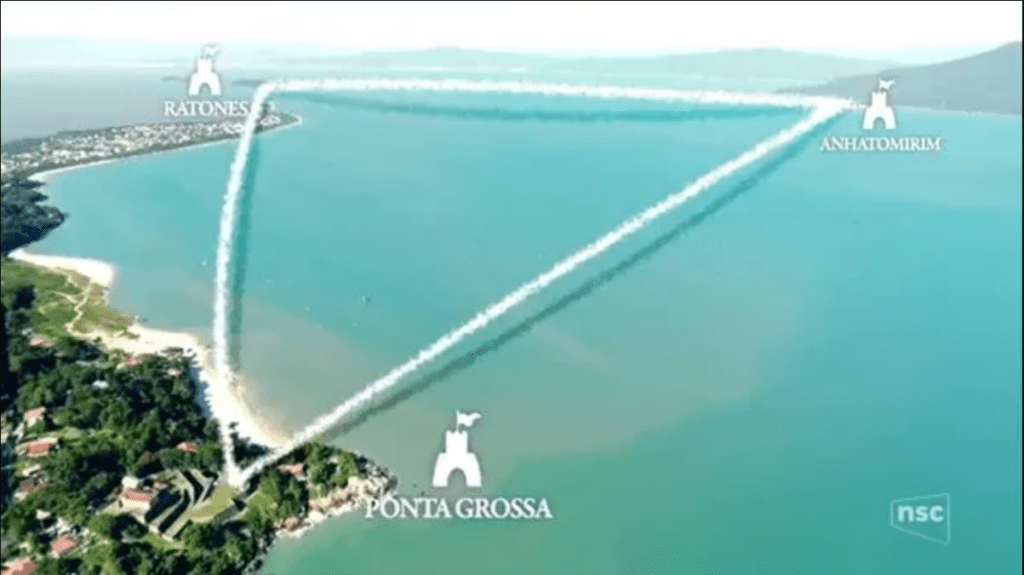
Defensive Vertex with Fortresses
The fortresses in the north of the island, Anhatomirim, Ponta Grossa and Ratones, were strategically designed to form a defensive apex.
Paes’ idea was to cross the cannons and protect the bay from invasion by Spanish ships.
In addition, a fourth fortress was built on the island of Araçatuba to counter attacks from the south.
The most striking feature is the circular battery of cannons. It is one of the few in the world.
In fact, when viewed from above, it is possible to see that the armament was arranged at 360 degrees.
In this way, from whichever side the attack came, the enemy could be engaged.
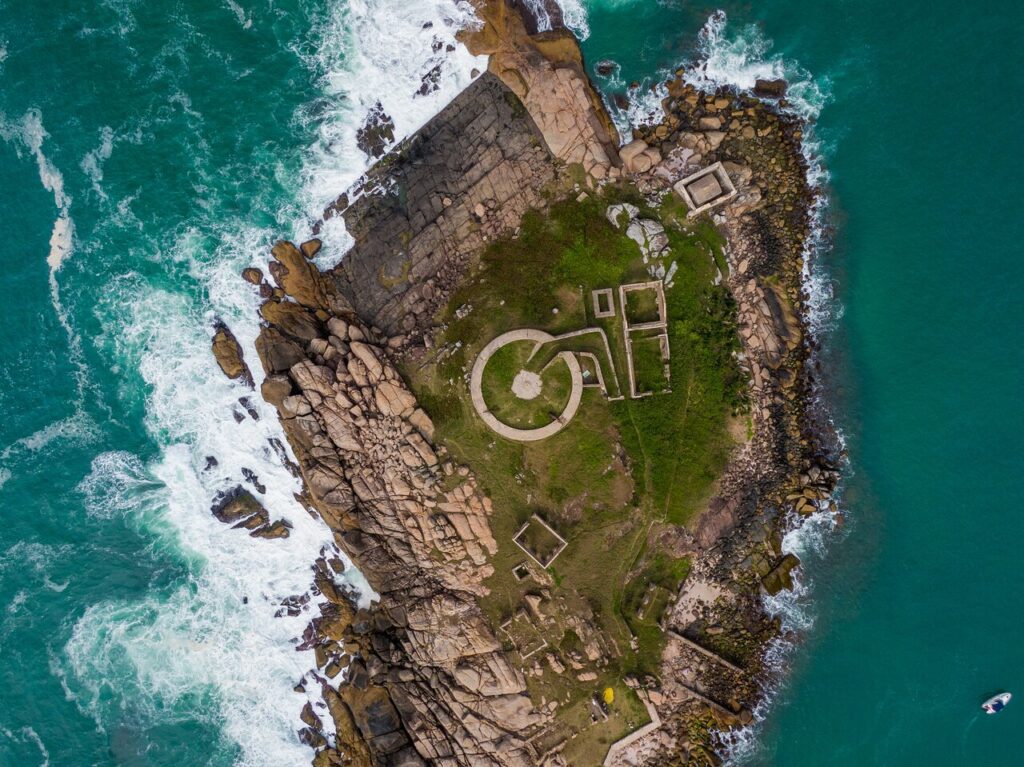
Strengths: Historical heritage
In the 1970s, the Instituto do Patrimônio Histórico e Artístico Nacional (IPHAN) carried out the first restoration works on the Fortress of Santa Cruz de Anhatomirim.
In 1979, the rediscovery of the fortifications as a cultural heritage of Santa Catarina and Brazil became part of the history of the Federal University of Santa Catarina – UFSC – when it definitively took over the guardianship and maintenance of Anhatomirim.
However, from 1989 onwards, the UFSC created and coordinated – together with IPHAN and the support of the Navy and other partners –
The Santa Catarina Island Fortresses Project, also managing the Ratones and Ponta Grossa fortresses, restored by the initiative.
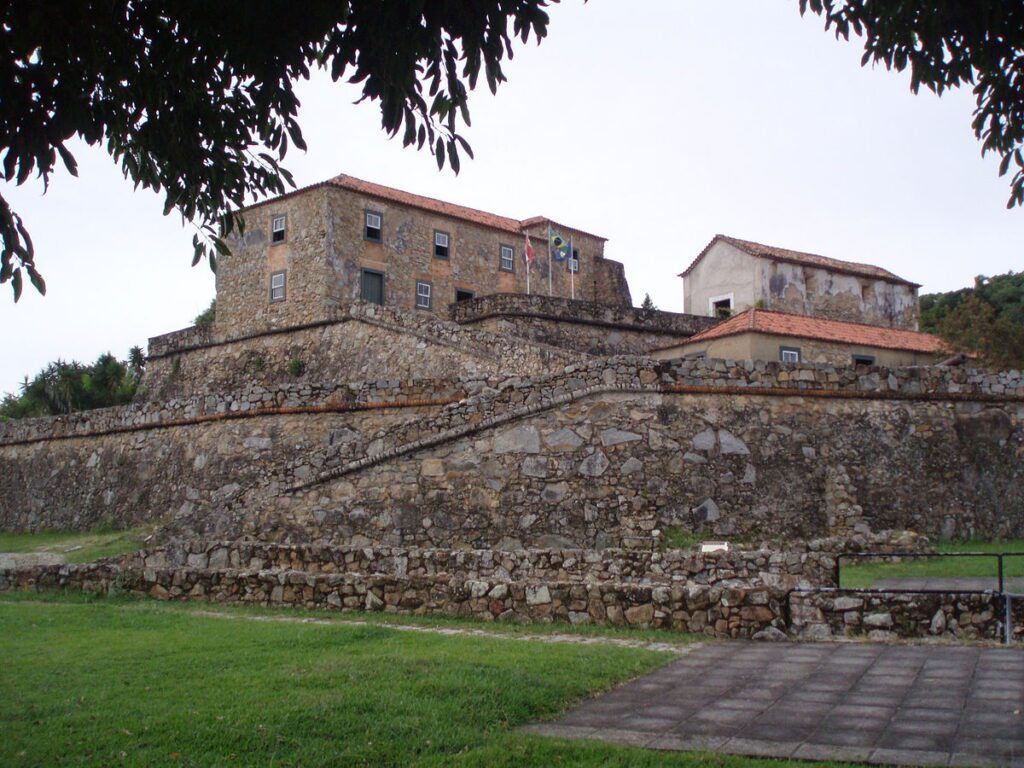
Historical Rescue of the Fortresses
The process of historical rescue is currently receiving actions of research, documentation, conservation, promotion and valorisation of the fortifications of Santa Catarina.
Thus democratising access to knowledge and contributing to the optimisation of the educational, cultural and touristic potential of these national monuments.
The forts are a pole of knowledge and culture and open to public visitation, being one of the best preserved sets of military architecture in Brazil.
In addition to the best known and most visited forts, there are many other forts on Santa Catarina Island. Click here.
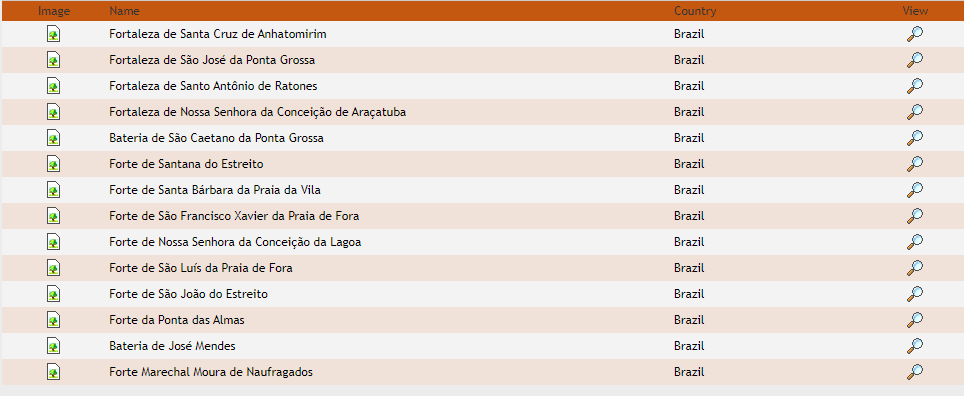
Consulte más información haciendo clic en la lupa de esta tabla, en este enlace: https://fortalezas.org

